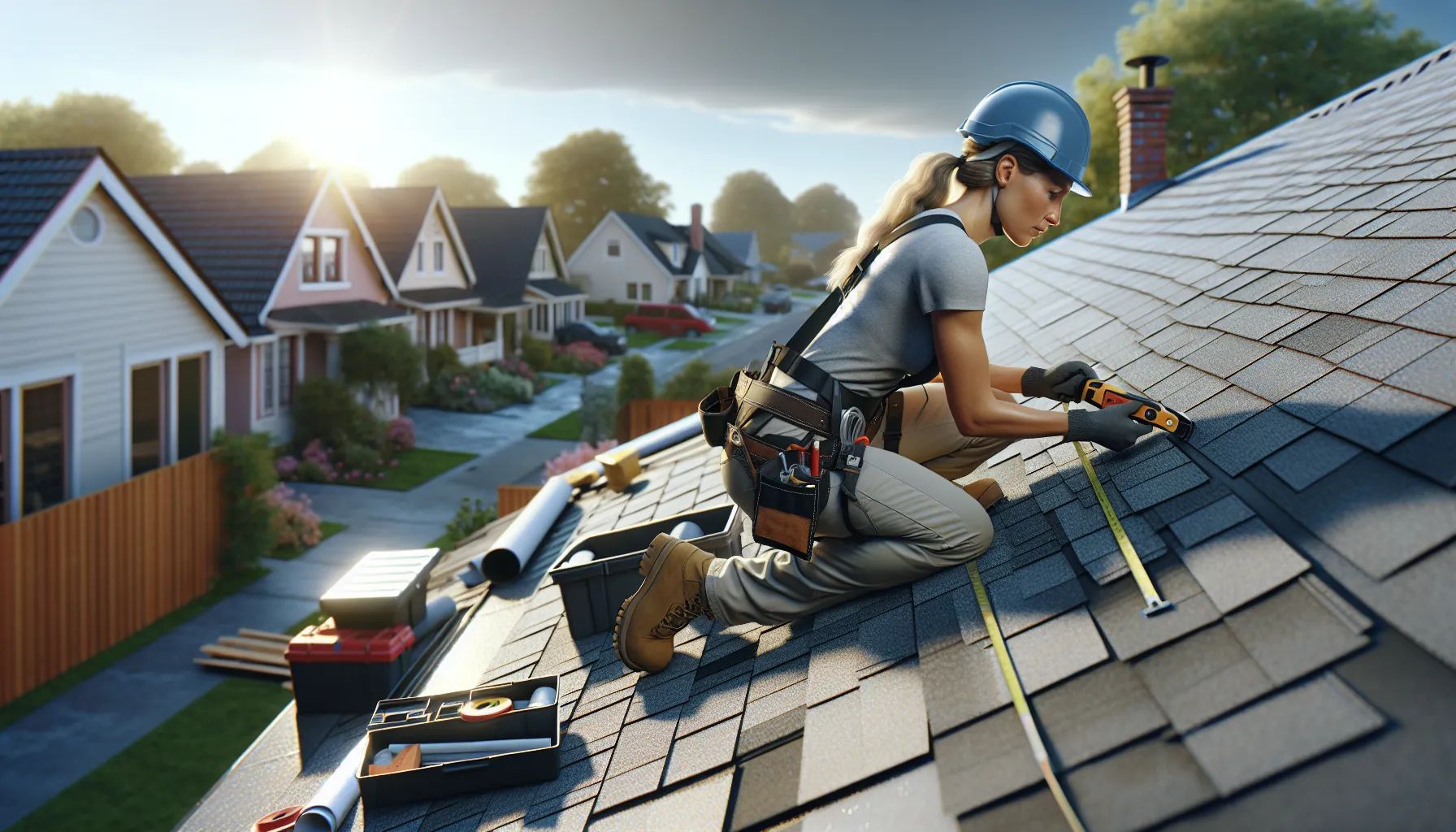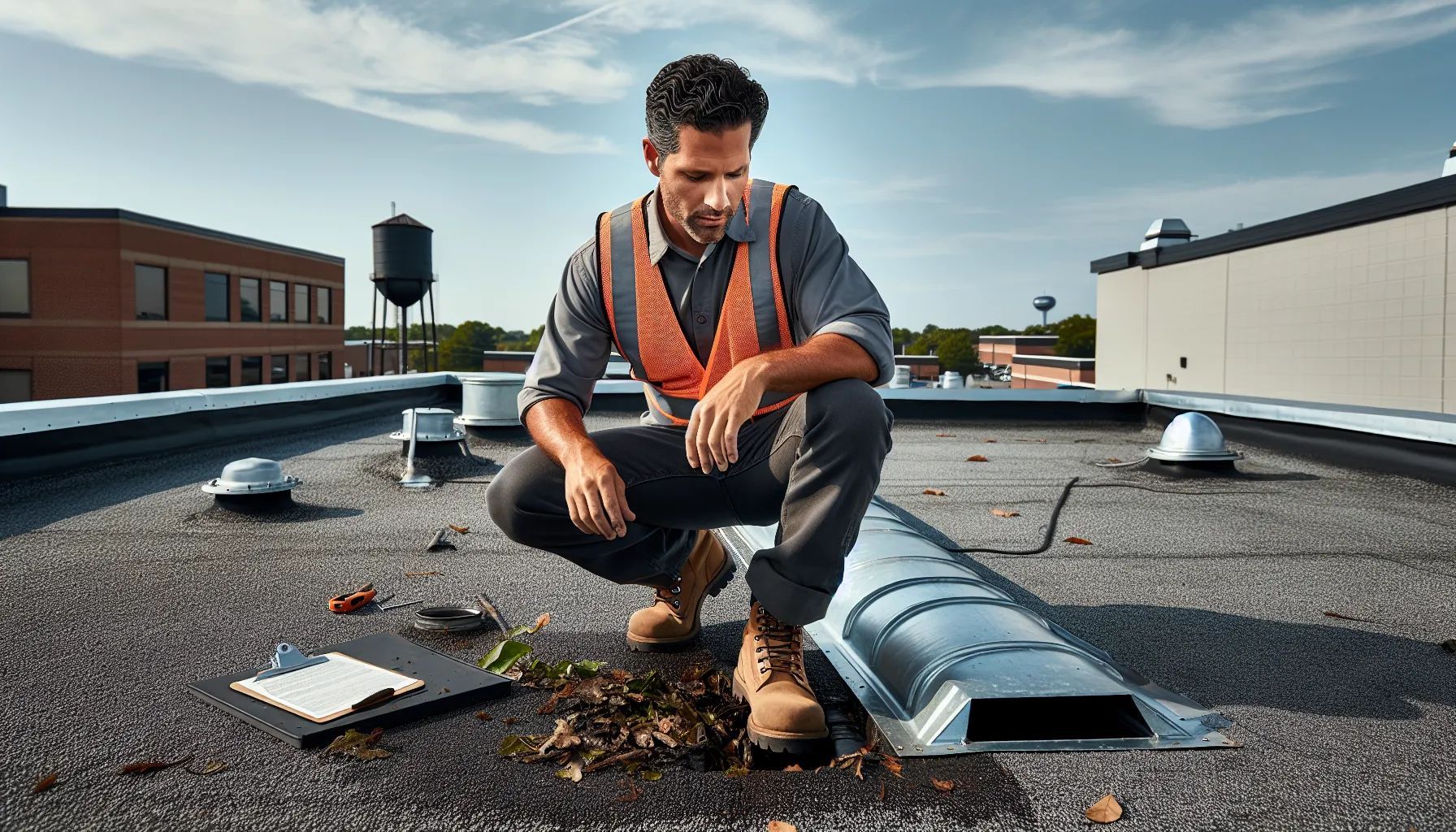What Do Insurance Adjusters Look for on Roofs? Complete Inspection Checklist

When filing a roof damage claim, understanding what insurance adjusters look for on roofs can make the difference between approval and denial. We've seen countless homeowners struggle with the claims process simply because they don't know what adjusters prioritize during inspections.
Insurance adjusters follow specific protocols when evaluating roof damage. They're trained to spot both obvious and hidden issues that could affect your claim's outcome. From storm damage to wear patterns, every detail matters in their assessment.
We'll reveal the exact checklist adjusters use during roof inspections and share insider knowledge that'll help you prepare for their visit. Whether you're dealing with recent storm damage or planning ahead, knowing these critical inspection points will put you in a stronger position when it's time to file your claim.
Common Types of Roof Damage Insurance Adjusters Assess
Insurance adjusters examine roofs for specific damage patterns that indicate legitimate claims. We'll explore the three primary categories of damage that adjusters document during their inspections.
Storm and Weather-Related Damage
Hail damage appears as circular dents ranging from 0.75 to 2 inches in diameter on asphalt shingles. Adjusters check for exposed mat material where hail strikes remove protective granules. They photograph impact patterns across the entire roof surface to establish damage consistency.
Wind damage manifests through lifted, creased, or missing shingles. Adjusters inspect seal strips for breakage and document any exposed nail heads. They measure wind speeds from local weather reports to verify damage aligns with recorded conditions.
Ice dams create water backup that penetrates beneath shingles. Adjusters examine gutters for ice formation evidence and check interior ceilings for water stains. They document temperature fluctuations that cause freeze-thaw cycles leading to ice dam formation.
Lightning strikes leave burn marks, split wood, or melted metal components. Adjusters trace electrical paths from strike points to ground connections. They photograph charred areas and test electrical systems for surge damage.
Age and Wear Indicators
Granule loss accelerates after 15 years of shingle life. Adjusters run their hands across shingle surfaces to assess granule adhesion. They check gutters for excessive granule accumulation indicating advanced wear.
Curling shingles signal aging through upturned edges or center buckling. Adjusters measure curl severity using standardized scales from 1 to 4. They note whether curling affects isolated areas or spreads across entire roof sections.
Brittleness develops as shingles lose flexibility over time. Adjusters perform bend tests on shingle tabs to determine brittleness levels. They document any cracking that occurs during gentle manipulation.
UV damage causes color fading and material degradation. Adjusters compare protected areas under flashing to exposed sections. They use color charts to quantify fading severity for replacement matching.
Age and Wear Indicators
Tree branch impacts create punctures, tears, and abrasions. Adjusters measure hole diameters and document penetration depth through roofing layers. They photograph bark residue or wood fragments embedded in damaged areas.
Falling debris from construction or accidents leaves distinct impact signatures. Adjusters identify foreign materials like concrete chips or metal shards in damage zones. They correlate damage timing with nearby construction permits or incident reports.
Animal damage includes gnaw marks, nesting materials, and entry holes. Adjusters inspect soffits, vents, and roof edges for animal access points. They document droppings, tracks, or fur as evidence of wildlife activity.
Foot traffic damage appears as cracked tiles or compressed insulation paths. Adjusters identify shoe tread patterns in granule displacement. They check common walking routes like valleys and roof-to-wall intersections for repeated impact damage.
Key Areas Insurance Adjusters Inspect on Roofs

Insurance adjusters examine four critical areas during roof inspections to determine damage extent and claim validity. We'll explore each inspection zone that adjusters prioritize when evaluating roof damage claims.
Shingles and Roofing Materials
Adjusters inspect shingles for physical damage indicators including bruises, broken matting, and missing pieces. They document granule loss patterns that signal hail impacts measuring 1 inch or larger in diameter. Cracked shingles indicate potential wind damage when speeds exceed 60 mph during storms.
Curled shingle edges reveal heat damage or improper installation that compromises roof integrity. Adjusters photograph each damaged section from multiple angles to create comprehensive documentation. They count damaged shingles per square foot to calculate replacement costs accurately.
Missing shingles create immediate vulnerability to water intrusion and structural damage. Adjusters note the location of each missing shingle on roof diagrams for claim processing. They check surrounding shingles for looseness that indicates widespread damage patterns.
Color variations in shingles help adjusters identify repair history and damage timelines. Fresh damage appears distinctly different from weathered sections on established roofs. This visual evidence supports claim dating and verifies storm-related damage versus normal wear.
Gutters and Drainage Systems
Adjusters examine gutters for dents that match hail impact patterns on roof surfaces. They measure dent sizes and depths to correlate with weather event severity reports. Blocked gutters indicate maintenance issues that can void certain claim coverages.
Downspout damage affects water flow and can cause foundation problems if left unrepaired. Adjusters test drainage efficiency by checking for standing water or overflow marks. They document rust spots, separation points, and attachment failures along gutter systems.
Gutter guards receive special attention as damaged guards allow debris accumulation. Adjusters note bent or missing sections that compromise drainage system functionality. They photograph ice dam evidence in gutters that signals inadequate attic ventilation.
Drainage slope measurements determine if gutters direct water away from structures properly. Adjusters use levels to verify proper pitch ratios of 1/4 inch per 10 feet. They mark areas where improper drainage contributed to roof deck deterioration or fascia damage.
Flashing and Seals
Adjusters inspect flashing around chimneys, vents, and skylights for cracks or separation. They probe sealant integrity using specialized tools to detect hidden deterioration. Damaged flashing accounts for 85% of roof leaks in insurance claims.
Step flashing along walls receives careful examination for proper overlap and secure attachment. Adjusters document rust stains that indicate long-term water penetration through compromised flashing. They measure gap widths between flashing and roof surfaces to assess repair requirements.
Boot seals around plumbing vents show age through cracking and brittleness. Adjusters test flexibility by gently pressing seal edges to check for deterioration. They note UV damage patterns that suggest seal replacement timing.
Valley flashing inspections reveal debris accumulation points and wear patterns from water flow. Adjusters verify proper flashing width of at least 24 inches for adequate protection. They document any visible nail heads that compromise flashing water resistance.
Structural Components
Adjusters assess roof decking for sagging that indicates water damage or inadequate support. They measure deflection amounts exceeding 1/2 inch over 4-foot spans as structural concerns. Interior attic inspections reveal water stains, mold growth, and insulation damage.
Rafter integrity checks identify cracks, splits, or rot affecting load-bearing capacity. Adjusters use moisture meters detecting readings above 20% that signal active leaks. They document daylight visibility through roof boards indicating separation or holes.
Soffit and fascia boards show damage through peeling paint, rot, or animal entry points. Adjusters note ventilation blockages that contribute to moisture accumulation and premature aging. They calculate linear feet of damaged trim components for replacement estimates.
Ceiling stains inside homes provide evidence of ongoing or previous roof leaks. Adjusters measure stain dimensions and test surrounding drywall for moisture content. They correlate interior damage locations with exterior roof problem areas for comprehensive claim documentation.
Documentation Methods Used by Insurance Adjusters

Insurance adjusters use standardized documentation methods to create comprehensive records of roof damage. These methods ensure accurate claim processing and provide evidence for both insurance companies and homeowners.
Photography and Video Evidence
Adjusters photograph every roof slope and damage area during their inspection. They capture close-up images of individual damaged shingles, impact marks, and missing granules. Wide-angle shots document overall roof conditions and damage patterns across different sections.
Digital cameras with high resolution capture details like hairline cracks in shingles or subtle hail impact marks. Adjusters photograph damaged flashing around chimneys, vents, and skylights from multiple angles. They document gutter damage, including dents, separations, and granule accumulation.
Video recordings supplement still photography for complex damage patterns. Adjusters use video to show water flow issues, loose shingle movement in wind, or extensive damage areas. They record interior ceiling stains and attic water damage when roof leaks occur.
All visual evidence uploads directly to insurance claim systems through mobile devices. Insurance companies store these files digitally for claim review and potential dispute resolution. Timestamps and GPS coordinates often accompany photos to verify inspection dates and property locations.
Damage Measurements and Mapping
Adjusters measure roof dimensions to calculate total square footage and affected areas. They use measuring tapes or laser distance tools to record accurate roof measurements. Standard practice includes creating 10-foot by 10-foot test squares to count hail impacts in representative areas.
Damage mapping involves sketching roof diagrams with marked damage locations. Adjusters note the number of damaged shingles per roof section and indicate wind-lifted areas. They mark locations of missing shingles, exposed underlayment, and compromised flashing.
Hail damage documentation requires counting impact marks within test squares across different roof slopes. Adjusters record impact sizes, typically categorizing them as dime, nickel, quarter, or golf ball-sized. They calculate the percentage of damaged area compared to total roof surface.
Detailed measurements include ridge lengths, valley dimensions, and eave measurements. Adjusters document the pitch of each roof section since steeper slopes often show different damage patterns. They record the distance between damage points and roof edges or penetrations.
Professional Assessment Tools
Moisture meters detect water intrusion beneath shingles and in roof decking. Adjusters use pin-type or pinless meters to measure moisture content in suspected leak areas. Readings above 15-20% moisture content typically indicate water damage requiring attention.
Digital pitch gauges measure roof slopes accurately for proper damage assessment and repair calculations. Adjusters use infrared cameras to identify hidden moisture problems not visible during visual inspection. These cameras detect temperature variations indicating wet insulation or trapped moisture.
Drone technology allows adjusters to inspect steep or dangerous roof areas safely. High-resolution drone cameras capture detailed imagery of hard-to-reach sections like steep dormers or tall chimneys. Drones equipped with thermal imaging identify heat loss areas suggesting compromised roof integrity.
Adjusters use specialized software applications on tablets to input inspection data directly into standardized forms. These apps integrate photos, measurements, and notes into comprehensive digital reports. GPS-enabled devices ensure accurate property identification and help prevent fraudulent claims at wrong addresses.
Red Flags That May Affect Your Insurance Claim
Insurance adjusters identify specific warning signs that can complicate or invalidate your roof damage claim. Understanding these red flags helps you avoid claim denials and ensures proper compensation for legitimate damage.
Pre-Existing Damage vs. New Damage
Insurance adjusters examine damage patterns to determine when roof problems occurred. Fresh damage shows distinct characteristics different from weathered conditions that developed over time.
Adjusters compare damage coloration against surrounding materials. New impact marks display bright exposed wood or fresh metal surfaces beneath protective coatings. Old damage exhibits weathering signs including rust stains, moss growth, or dirt accumulation in cracks.
Documentation timing proves critical for establishing damage occurrence. Adjusters review previous inspection reports, maintenance records, and dated photographs showing roof conditions before claimed events. Weather reports confirm if claimed storm damage aligns with actual weather patterns in your area.
Material aging patterns reveal damage timelines. Fresh hail strikes create sharp indentations with clean edges while older impacts show rounded edges from erosion. Wind damage produces immediate lifting or tearing whereas gradual deterioration causes slow curling and brittleness.
Adjusters photograph comparison areas between damaged and undamaged sections. Consistent weathering across the entire roof suggests long-term issues rather than sudden storm damage. Insurance companies often deny claims when evidence indicates damage existed before policy coverage began.
Improper Maintenance Issues
Regular maintenance prevents many roofing problems that insurance policies exclude from coverage. Adjusters document maintenance neglect that contributed to damage severity.
Clogged gutters cause water backup leading to roof deck deterioration. Adjusters check gutter systems for debris accumulation, sagging sections, and overflow stains on fascia boards. Insurance companies reduce claim payments when poor drainage accelerated damage progression.
Missing or damaged flashing around chimneys, vents, and skylights indicates maintenance failures. Adjusters inspect sealant conditions, noting dried, cracked, or separated caulking that allowed water infiltration. Proper flashing maintenance prevents 85% of roof leaks according to roofing industry data.
Moss and algae growth signals moisture retention problems. Adjusters measure affected areas and document thickness of organic growth. Extended moss presence deteriorates shingle granules and shortens roof lifespan by 5-10 years.
Tree branches touching roof surfaces create ongoing damage through constant rubbing. Adjusters note scratch patterns, worn spots, and accumulated debris from overhanging vegetation. Insurance policies require homeowners to trim trees preventing predictable damage.
DIY Repairs and Modifications
Unauthorized repairs complicate insurance claims by introducing non-standard materials and installation methods. Adjusters scrutinize DIY work that violates building codes or manufacturer warranties.
Mismatched shingle colors and textures indicate owner repairs. Adjusters measure patch sizes and document installation quality including improper nailing patterns, inadequate overlap, and missing underlayment. Amateur repairs often void manufacturer warranties affecting claim coverage.
Improper sealant applications create water infiltration paths. Adjusters test roof cement, tar patches, and silicone applications for adhesion failures and cracking. Professional repairs use specific products matching original materials while DIY attempts frequently use incompatible substances.
Satellite dish and solar panel installations require professional mounting systems. Adjusters examine attachment points for proper flashing integration and structural support. Homeowner installations lacking permits or proper weatherproofing face claim reductions.
Modified ventilation systems affect roof performance. Adjusters verify ridge vents, turbines, and soffit modifications meet building codes. Inadequate ventilation causes premature shingle failure reducing insurance coverage for related damage.
How to Prepare Your Roof for an Insurance Inspection
Proper preparation before an insurance adjuster arrives significantly impacts claim outcomes. We'll guide you through essential steps to ensure your roof inspection proceeds smoothly and accurately.
Essential Documentation to Gather
Insurance adjusters require specific documents to process roof damage claims efficiently. We recommend collecting your homeowner's insurance policy details, including coverage limits and deductibles. Gather all previous roof repair receipts dating back at least 5 years to establish maintenance history.
Photograph your roof's current condition from multiple angles before the adjuster arrives. Take at least 20-30 clear photos showing damaged areas, surrounding undamaged sections, and overall roof views. Include close-ups of specific damage points like missing shingles or dented gutters.
Document the exact date and time of the damage-causing event. Weather reports, news articles about local storms, or neighborhood damage photos strengthen your claim's validity. Keep receipts for any emergency repairs you've made to prevent further damage.
Temporary Repairs and Safety Measures
Immediate action prevents additional damage while awaiting inspection. Cover exposed areas with heavy-duty tarps secured by 2x4 boards rather than nails to avoid creating new holes. Apply roofing cement to small cracks or gaps as a temporary seal.
Clear all debris from your roof and gutters before the adjuster's visit. Remove fallen branches, leaves, and any loose materials that might obscure damage or create safety hazards. Secure any loose shingles with roofing adhesive to prevent them from falling during inspection.
Install safety barriers around damaged areas if structural integrity appears compromised. Place warning cones or tape near weak spots to alert the adjuster. Ensure ladder placement areas remain clear and stable for safe roof access.
Avoid permanent repairs before the inspection concludes. Insurance companies often deny claims when homeowners complete repairs without proper documentation. Photograph all temporary measures you carry out, noting dates and reasons for each action.
Conclusion
Understanding what insurance adjusters examine during roof inspections empowers homeowners to navigate the claims process with confidence. We've seen how adjusters use specific protocols and advanced tools to identify damage that might otherwise go unnoticed.
The key to a successful claim lies in preparation and professional support. By maintaining proper documentation and working with experienced roofing contractors who understand insurance procedures we can ensure all legitimate damage receives proper recognition.
Remember that adjusters aren't just looking for obvious problems—they're trained to spot subtle indicators that affect your roof's integrity and your claim's validity. Whether you're facing current damage or planning ahead we recommend regular roof maintenance and prompt professional assessments after any severe weather event.
Your roof protects everything beneath it and proper insurance coverage ensures that protection continues when damage occurs. Armed with this knowledge you're now better equipped to work effectively with adjusters and secure the compensation needed for necessary repairs.
What type of damage do insurance adjusters look for on roofs?
Insurance adjusters examine three main categories of damage: storm and weather-related damage (hail, wind, ice dams, lightning), age and wear indicators (granule loss, curling shingles, UV damage), and impact damage (falling debris, tree branches, animal activity). They document specific patterns and signs that indicate when and how the damage occurred.
Which areas of my roof will the adjuster inspect?
Adjusters conduct thorough inspections of four critical areas: shingles and roofing materials for physical damage, gutters and drainage systems for blockages and dents, flashing and seals around chimneys and vents for deterioration, and structural components like roof decking and rafters for water damage or integrity issues.
How do insurance adjusters document roof damage?
Adjusters use standardized documentation methods including detailed photography and video evidence, roof measurements and damage mapping, professional assessment tools like moisture meters and infrared cameras, and drone technology for hard-to-reach areas. All findings are compiled into comprehensive digital reports for accurate claim processing.
What red flags could lead to claim denial?
Common red flags include pre-existing damage not covered by your current claim, lack of proper maintenance like clogged gutters or organic growth, unauthorized DIY repairs that violate building codes, and failure to document damage promptly. Adjusters carefully distinguish between new and old damage patterns to determine coverage eligibility.
Should I make repairs before the adjuster visits?
Only make temporary repairs to prevent further damage, such as tarping exposed areas. Avoid permanent repairs before the inspection as this can lead to claim denial. Document all temporary measures taken and keep receipts. Wait for the adjuster's assessment before proceeding with any permanent repair work.
Should I hire a roofing contractor before the inspection?
Yes, working with an experienced roofing contractor familiar with insurance claims can be beneficial. They can provide detailed damage assessments, advocate for you during the inspection, and ensure all legitimate damage is properly documented. Choose contractors who understand insurance processes and can help maximize your claim's accuracy.

